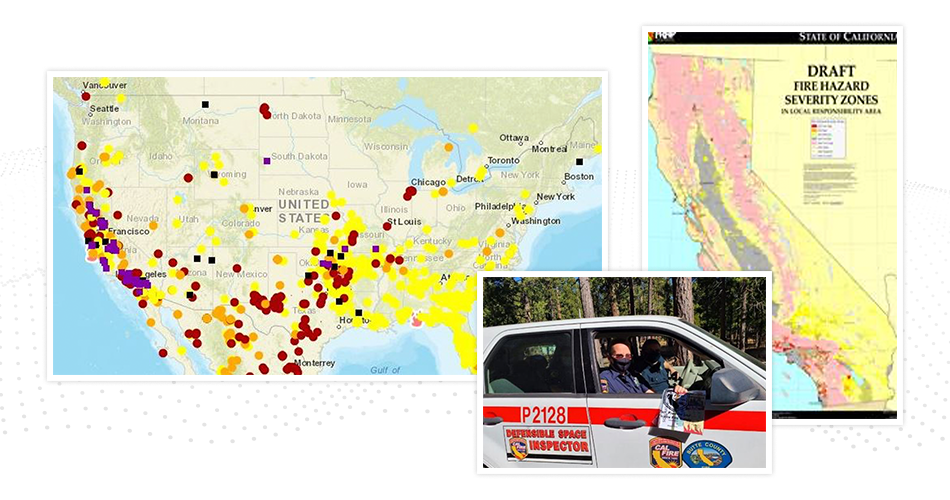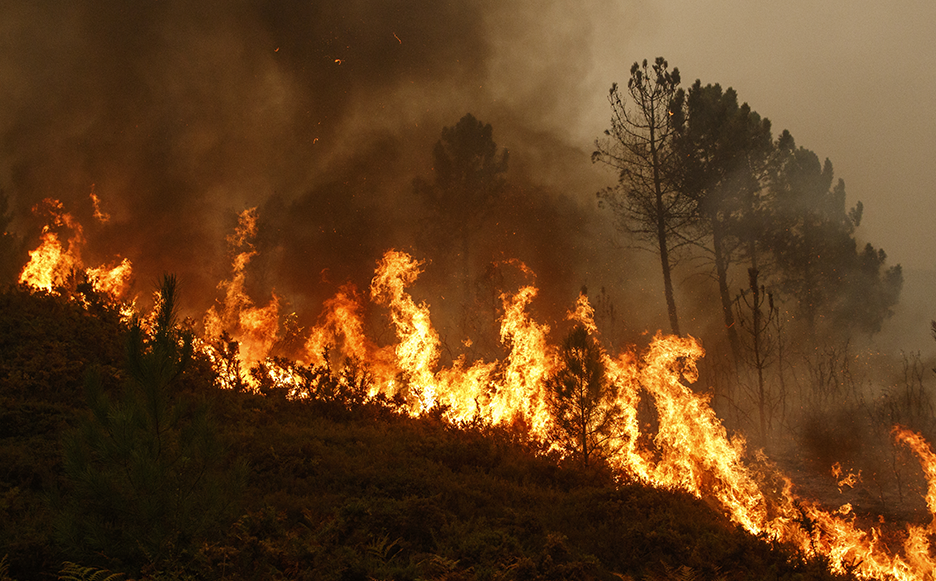For the past two decades, the United States has experienced an average of 70,600 wildfires a year, according to the National Interagency Coordination Center.
These wildfires strike a diverse set of areas and many different terrains. They devastate populations big and small, and don’t mind county lines.
Wildfires cross boundaries of every type, from geographical to jurisdictional. They are, by definition, uncontained and without borders.
That means community risk reduction management standards and collaboration across borders is vital for public safety.
“The Legislature hereby finds and declares as follows: Since fires ignore civil boundaries, it is necessary that cities, counties, special districts, state agencies, and federal agencies work together to bring raging fires under control.” - California Government Code 51175

Wildfire Prevention Consensus
According to the U.S. Fire Administration, the wildland-urban interface (WUI) area continues to grow by approximately two million acres per year.
Nearly every state is impacted by wildfires. In 2020, wildfires burned approximately 9.5 million acres in the West alone. But while the fires in midwestern and eastern states burned a significantly-less 700,000 acres, those states saw more individual fires collectively.
It’s clear that the threat of wildfires is widespread and impacts federal, state, local, and private properties without discretion. And as we’ve all seen in recent months, this increasingly includes places that haven’t had to face wildfires in modern history.
The general approach to preventing wildfires, especially in the critical WUI areas, is a ubiquitous process across regions and jurisdictions. In the fire trifecta of fuel, heat, and oxygen, only fuel is can be easily managed. Because of this, much of the consensus around wildfire risk reduction practices, regulations, and enforcement is focused on fuel inspection and management.
The majority of fire professionals agree that there are four things that can effectively reduce fuel hazards:
- Fuel Location. Assess & Identify potential fire safety risks.
- Fuel Removal. Remediate potential fire safety risks.
- Follow-up. Verify the reduction of fire safety risks.
- Report. Document and measure community wildfire preparedness.
The issue is that how various jurisdictions actually address these elements varies significantly. The standards that guide them, their processes, and the solutions they use to manage it all are different – even between neighboring cities and counties and the states in which they’re located.
Wildfire Prevention Differences Across Borders
Community risk reduction and wildfire prevention differs from state to state, but it’s the diversity in approaches between cities and counties within a state that often causes the biggest issues.
When you consider the thousands of fire stations located around the country, it’s not hard to see why these differences exist.
For example, in states that have adopted codes and regulate defensible space, gaining and reporting on compliance continues to be a difficult task for many jurisdictions. They’re often left to create their own processes and workflows and to find their own solution for managing and reporting on it all.
States end up with a myriad of local fire agencies that each have their own ways of inspecting, managing, and reporting compliance – with varying degrees of success. For example, some agencies focus on education by speaking with individual property owners while others use engine companies to perform sweeps of neighborhoods or use volunteers as “boots on the ground” to assess and pencil out reports. Across it all is a patchwork of different software systems and manual processes that make it difficult to communicate across agencies or achieve uniform success across a state.
In fact, few state and local fire agencies are able to inspect all their Very High Fire Severity Zone properties and gain compliance annually. Some local fire agencies have a method of cost recovery for dealing with difficult properties. But again, most do not. Unfortunately, the diverse local methodologies make it nearly impossible for state fire marshals to effectively manage the statewide fire risk in real-time.
This is where community risk reduction standards across jurisdictional borders enter the picture as a sensible long-term solution.
Standardizing Wildfire Prevention Management
When we talk about standardized activities like inspection, documentation, and reporting, the obvious question is how? How are you supposed to create and enforce these standards?
There are a few best practices and solutions worth mentioning.
One example of effective standardization is recent legislation in California that requires the Office of the State Fire Marshal (SFM) to develop a “model defensible space program” available for use by a city, county, or tribes within the enforcement zone of defensible space provisions. The program is required to have specified components, including general guidelines for creating and maintaining defensible space around structures.
But uniform guidelines or regulations won’t be sufficient without empowering local agencies with adequate tools to do the job. Ideally, both state and local agencies should subscribe to the same modern technology platform for managing community risk reduction programs. This ensures consistency and access to accurate, real-time data across borders.
With a standard system across agencies, implementation and maintenance costs and timelines could be significantly reduced for each. Processes and automated workflows could be more easily shared across jurisdictions, communicating data between agencies would be streamlined, and each agency would be supported with all the tools they need to effectively manage risk reduction in their community.
In short, fire professionals would be empowered to worry less about their technology and focus more on doing the work that truly matters to keep lives and property safe from the growing threat of wildfires.3Di Engage for Fire Prevention: An Effective Solution to the Problem
Of course, using a consistent software platform for wildfire prevention management only works well if the platform itself is up to the task. We’re proud to say that we’ve created one that is: 3Di Engage for Fire Prevention.
Already, more defensible space inspections are performed with 3Di’s solution than any other software as a service (SaaS) solution nationwide. 3Di Engage for Fire Prevention is built to support all fire agencies, whether they serve an entire state or a local city or county, with comprehensive features for public education and engagement, inspections, community resilience assessments, cost recovery, data-driven insights, and more. Better yet, it does all this in a manner that is intuitive, consistent, and effective.
Learn more on 3Di’s Community Risk Reduction page to see why fire departments big and small turn to 3Di’s wildfire prevention solution to help them follow a standardized approach that keeps their community one step ahead of wildfire risk.
And if you’d like to see the solution in action, click here to request a no-strings-attached demo.

